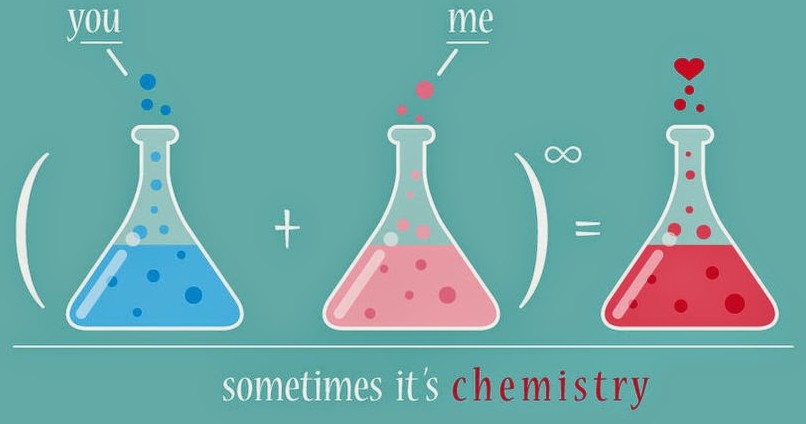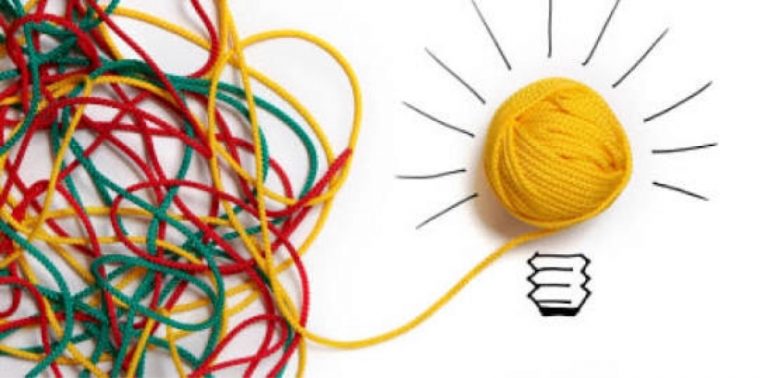The A to Z of How To Organize A Pitch -part II
Last week we started to present you a series of steps you musttake in order to make sure you organize a good pitch. Today we continue with Cristina Oncescu’s opinion, by presenting you the rest of your journey.
How should the brief look like?
What makes a good brief is not the form, a list of boxes to fill-in, but some basic principles which can be applied to almost any briefing situation. There are three basic principles from IPA:
- Be clear about what is needed
- Provide the critical information necessary to complete the task
- Inspire or motivate people to do their best
These principles apply equally to briefing marketing communications as briefing many other things in life. Often with marketing communications we make it over-complicated and forget the basic principles ending up with the agency being unclear on what is required. In other areas of life we do things more instinctively and use the most efficient means of briefing – for example, it’s sometimes faster and more accurate to brief a hairdresser by using a picture rather than a verbal description.
Clarity of objectives
It seems self-evident that the most important part of a brief is a clear description of what the aim of the brief is. Yet in our industry review of briefing techniques this is consistently the weakest area of written briefs. It is often confused with overall business, brand or marketing objectives, whereas the single most important content section is the communication objective itself. Some briefs simply describe the sales target without any thought as to the role of communications.
Agencies need this clarity and it is the responsibility of the person writing the communications brief to provide this.
A brief should be just that
Aim for a brief that is succinct and memorable. If it isn’t, it’s likely to be less effective. At the very least aim for something which can be remembered when the piece of paper is not in front of the person or team that has been briefed – if the writer of the brief can’t even remember what it was about without a prompt, what chance is there of others internalizing what is required?
Of course there is room for attachments and additional material. Sometimes a large volume of background material can be helpful as one seemingly small bit of information could prompt a thought that leads to the solution. But best practice is to provide only the critical information that is relevant to the task. Why make agency people wade through masses of irrelevant information? Often it is a lack of thought that leads to this approach.
As Blaise Pascal wrote as long ago as 1657: “I have made this letter longer, because I have not had the time to make it shorter.”
Fundamentally brief writing is about making decisions about what is needed. Deciding what to leave out is part of that. Whilst there may be a need to provide greater depth of supporting material, the overall brief itself still needs to be simple and clear.
Inspired to greatness
When asking marketing people ’What makes a good brief?’, the answers are mostly about objectives, requirements, target audience etc. Only on prompting do people recognize that inspiring the agency or the team to produce great work is a critical element. Perhaps clients assume that an agency will be motivated enough by remuneration, the fear of losing the business, or simply by any opportunity to do good work.
However experience shows that those clients who not only put more thought into their brief, but also use their own creativity to make briefing the agency or agencies an inspiring experience, tend to get better results. There are three main reasons for this: firstly the brief will stand out from the other assignments that the agency is working on and get an unfair share of attention. Secondly a client who has put more thought into the presentation of their brief is likely to have greater empathy for agency psychology and the creative process making it more likely that they have provided the springboard for a great creative leap. Thirdly a client who delivers a great brief signals that they are in the market for a great creative response, and likely to be excited rather than frightened by one.
Most marcoms briefs also act as a business process document to initiate a job start – in effect it’s a purchase order and since large sums of money will be involved in both time and resources it needs to be taken very seriously.
Majority of those briefs have three broad areas of heading: the background, the brief itself, and an implementation and process section.
The background headers might include
Background: Usually covers the business and marketing context and why the task is important
Marketing or Sales Objectives: This sometimes includes the business case for the activity
Brand: Remarkably this is often overlooked. It might include brand identity/brand capsule/brand vision/brand architecture/brand status/brand values/brand personality
Previous Learning: Again a section which is only used occasionally, but may have wider potential

The main communications brief section headers might include:
Communications objectives: Sometimes they might be expressed as communications imperatives/ challenges/barriers
Target audience: Usually this section asks for more than simple demographics and specifically prompts for attitudes or other motivators
Consumer insights: Sometimes specifically linked to the objective
Key message/proposition: Often phrased as the single-minded proposition/the one thing we want to say
OR
Strategic benefit: May ask for emotional and functional benefits
Consumer takeout: What they will think or do
Tone of voice: As distinct from brand personality
The implementation and process headers might include:
Timings/key dates: May include project timelines as well as timing for response
Budget: May specify if production is included or not
Response mechanisms: On relevant types of brief
Evaluation/success criteria: A critical element for most disciplines
Mandatories/guidelines: May include what must be included and executional considerations
Approvals: Signatures of both those issuing/approving the brief and the agency
The choice of ‘proposition/message’ or ‘strategic benefit’ is one which reflects the thinking of the organization and the relationship with their agencies. The use of a ‘proposition’ on the marcomms brief can be quite closely related to how many agencies use a ‘proposition’ in their own creative briefs. This could be seen positively as aligning thinking. An alternative view is that the role of the communications brief is to be clear about what the benefit is, and leave it up to the agency to think through how to best express that as a compelling proposition. This is largely a matter of style.
Main criteria for choosing the winner
The agency that scores best on the announced evaluation criteria, given that the client has held before a proper selection process, including background fitting and chemistry meetings.
The A to Z of How To Organize A Pitch – part I
The time when a client decides to make a pitch for the communication agency (either it’s a PR, advertising, digital or social media one) is extremely important in its business path. In order to make sure it’s a well spent time both for him/her and the company is representing, but also for the agencies involved, the client must be sure of a certain guide pitch , of a series of “rules” that will make their lives easier and also will lead to a successful result.

We talked with Cristina Oncescu, Head of Strategy pastel, and she put down some guidelines that will help you a lot.
What should a client know and must take in consideration when organizing a pitch?
Before organizing a pitch, a client should take time to carefully consider if they really need to change the current agency. Therefore the Institute of Practitioners in Advertising (IPA) recommends the following points to consider before embarking on an agency search:
Why are they organizing the pitch
The client should be very clear that changing agency would be in the best interests of the brand or the business organization, and will bring future value. Before embarking on a search for a new agency, he must be really sure that best efforts have been made to restore the existing client-agency relationship to health.
Have full support from top management
If a pitch is deemed to be the right course of action, the marketing or corporate communication must ensure that the client company’s top management fully endorse it, and that the key decision makers are clearly identified and enlisted in the process.
Consider getting outside help
It is advisable to seek outside professional help from specialist consultants, if considered suitable for the client company. The process is more objective, and dealing with the incumbent agency less unpleasant.
Check the contracts
Before the process begins, the client should check the provisions within the contract with the incumbent agency, particularly with regard to the notice period and termination of contract.
Inform the current agency
The client should consider the implications of informing existing agency that the pitch is taking place, weighing the need for confidentiality against the scenario of the incumbent finding out about the pitch from a source other than their client.
Decide the role to play by the new agency
The client should decide whether he is acting as the orchestrator of a series of agency relationships, he needs a ‘lead’ agency, or he requires a ‘one-stop-shop’.
Have a clear brief
The pitch organizing team should gain full agreement with all those involved in the decision making process about what the requirements of the agency are. They must invest time and effort in agreeing the budget and producing a written brief describing the brand or company’s current position, and where it wants to be in the context of clear marketing and business objectives.
Decide the kind of pitch to hold
Give some thought to the type of search that will best assist the client in making the appointment. The traditional pitch process is expensive for both parties, so agree fees where appropriate to offset a fair proportion of agency costs and to ensure a professional approach on both sides. Understand that many successful agency appointments are based on reputation, personal chemistry, credentials and references from other clients, as opposed to pitches. Workshops and trial projects are also effective methods of choosing an agency. Equally, online ‘e- sourcing’ techniques may help in the initial stages of researching the marketplace, but they should not replace the face-to-face contact which is so important in conducting a successful review and selection process.

If the client has checked the above and ended deciding to go through the pitch process, here are the steps:
- Prepare all the necessary background information
- Prepare an outline brief, including a clear indication of the brand or company marketing/communications budget. Consider the scope of work you will be asking the successful agency to undertake and ask the agencies to prepare some initial financial estimates accordingly, right at the outset. This avoids misunderstandings and manages expectations on both sides.
- If the client has chosen a consultant to help manage the selection process, work with them to develop a brief on the type of agency required, e.g. in terms of size relative to budget, location, and specialization, potentially conflicting business, etc. and draw up carefully the criteria that will form your checklist against which to judge the initial agency longlist.
- Identify relevant existing work for other clients, within the appropriate communications discipline, which they rate highly.
- Talk to colleagues in their own and other companies about their agency experiences.
- Undertake any necessary desk/online research, consulting agency directories, agency trade associations, and the trade press for additional background information about agencies that might interest you.
- Public sector clients need to ensure that their agency search and selection process is compliant with any public procurement regulations.
- Hold chemistry meetings and sign a confidentiality agreement
- Client should seek credentials information and case studies from, and hold initial chemistry meetings with, selected agencies that match the criteria in your outline brief.
- A confidentiality agreement must to be signed before undertaking any meetings. It is of benefit to both parties to enter into such an agreement, which should cover information and materials supplied by the client for the pitch and those produced by the agency in response.
- Client should decide whether to make a monetary contribution to the pitch. If so, this can be included in the non-disclosure agreement to form part of a wider pitch agreement. Some financial contribution (announced upfront and the same offer to all agencies on the shortlist) shows commitment and the seriousness of their intent.
- Think of the response required and prepare a written brief accordingly
- Prepare a concise but thorough written brief for the competing agencies. It is advisable to clarify if the pitch is a statutory one.
- It must be clear from the brief whether strategic proposals alone are required, whether some creative ideas or a full creative pitch are expected, or whether a workshop or trial project is envisaged. Agencies should respect the client’s wishes in this. The client should understand that creative pitches are an expensive and resource-draining exercise for agencies.
- Be clear about the nature of the services that they expect to use the agency for (e.g. some or all of brand planning/strategic thinking, communications planning, creative development, media planning and buying, digital, PR, events, etc.).
- Make the budget explicit from the outset.
- Identify and make clear all criteria on which the agencies’ presentations will be judged (e.g. strategic thinking, creative concepts, costing proposals, etc.).
- Specify the time allowed for meetings or presentations. If pitches are to take place at client premises, advise agencies on the presentation facilities available, size and nature of meeting rooms, number of participants, etc.
- Be disciplined on how many agencies are invited to respond to a preliminary ‘Request for Information’ (RFI). Asking more than 10 agencies is usually very wasteful of both client procurement and agency resources, and indicates an unclear brief. Good consultants will usually advise fewer than this to ensure a deeper focus on the agencies genuinely in contention.
- No more than six agencies should be asked to prepare extended credentials or ‘think-piece’ presentations for shortlisting.
- Invite up to three agencies to pitch (or four if incumbent included)
- Decide positively on a pitch list of up to three agencies only. If the incumbent is invited, the list can go up to four agencies in total.
- The client should not invite the incumbent to pitch if they have no intention of re-appointing them. Talk to the incumbent about why they are not including them in the shortlist.
- Avoid being seduced into lengthening the list.
- Make competing agencies aware of the number of agencies on the pitch list and whether the incumbent is included. The client should confirm in writing whether or not the pitch process and the names of the participants are confidential.

- Consider the time necessary for response to the brief
- Allow sufficient time for agencies to have face-to-face meetings to discuss the brief, ask questions, and to talk through their initial thinking. Don’t underestimate the value of informal meetings with the competing agencies in helping you to evaluate team ‘fit’.
- If the client decides to use a workshop approach, build in sufficient time to implement this process, including scheduling diary time for key personnel involved in the selection team.
- Time must be allowed for development of constructive ideas between brief and presentation. Bearing in mind that full proposals can take weeks or months to develop in an ongoing relationship, four weeks minimum is suggested for the development of work for a full creative pitch. Different pitch approaches, such as extended credentials, ‘think-pieces’, strategic recommendations, and workshops, can take less time and still be effective.
- Give background market data, interpretation and clarification
- The client should be willing to share, on a confidential basis, the overall business/corporate objectives, market data and other relevant research and allow agency personnel access to people in the company with whom they would work, if appointed.
- Make sure that there is always a specified senior member of the client’s company to handle all enquiries and meet requests of the agency to ensure consistency of response. Don’t underestimate the time involved of someone being fully available over a short period of time.
- Avoid giving the answers to one agency’s carefully considered questions to all the competing agencies (unless those questions highlight important information which should have been included in the original brief).
- Allow the same rules of access to all agencies pitching.
- Agree basic contractual terms upfront
- It is not usually in the interests of either the client or the agencies involved to spend time and money on negotiating full contract terms at this stage of the selection process, but the fundamental terms of business (such as budget, basic remuneration and scope of work) should be addressed in a Heads of Terms agreement.
- However, should the client have fixed terms of business which are not open to negotiation, then these should be put on the table, up front and in full, to make sure the competing agencies are clear on the terms under which the contract will be awarded ultimately.
- Understand the roles of all those involved on both sides and set up an objective evaluation system
- Ensure that all the decision makers have been fully briefed and that they are all present at each stage.
- Advise the agencies of job titles and roles of those attending for the client.
- Establish an objective evaluation system for assessing each presentation.
- Ensure that the agency presentation teams include people who will actually work on the business.
- Decide and inform quickly and fairly
- Decide on the winning agency as soon as possible, normally no more than one week after all the agency presentations have taken place (except in those special cases where it has been agreed to put competing creative work into research).
- Establish a proper procedure for notifying both successful and unsuccessful agencies of the decision.
- Ensure that all participating agencies learn of the result on the same day. Once the client has established that the chosen agency would accept the appointment if selected, they should inform the unsuccessful agencies before confirming the decision with the successful one. This is usually the best way to ensure that the losers do not hear the bad news first from someone other than the client.
10.Key guidelines on implementation and relationship management
- After the pitch, give the losing agencies the courtesy of a full ‘lost order’ meeting. Use a feedback form based on previously announced evaluation criteria.
- Any losing agencies must return all confidential material and information provided – in whatever format – and the client must not use any of losing agencies’ pitch ideas or information provided during the pitch process.
- Honour the incumbent agency’s contract, particularly with regard to the agreed notice period and payment of outstanding invoices.
- Ensure that they co-operate fully in a hand-over to the new agency, making sure that all materials belonging to you are handed back in accordance with the contract.
- Commence formal contract negotiations, based on the Heads of Terms agreement, and ensure final contracts are signed by all parties. Allow sufficient, but not open-ended, time for this negotiation to take place.
- Welcome the winning agency into the start of a long-lasting and mutually satisfying relationship. Arrange thorough for mutual induction meetings to create familiarity between client and agency, ensure understanding of respective business processes, and manage expectations for the working relationship.
- Agree realistic objectives for brand or corporate communications, put measures of effectiveness in place and report key metrics regularly at CEO/main board level.
- Client-agency relationships are valuable and need active management: review and reinvest regularly in the relationship by the strategic use of brainstorms, ‘awaydays’ and refreshing the team with new people.
What are the main DON’Ts?
- Don’t do it if you can still fix the situation with your current agency. A pitch is expensive and time-consuming for both the client and the agencies involved.
- Don’t fish for ideas and never award a winner.
- Don’t appropriate ideas from non-winning agencies.
- Don’t do it without a clear brief.
- Don’t do it without having evaluation criteria. Make sure the agencies are aware of them.
- Don’t do it without a set budget. It’s frustrating to receive great ideas that cannot be implemented because they cost way more than the available budget.
- Don’t invite more than three agencies. Or four with the incumbent agency. Held a thorough pre-selection process before.
- Don’t do it without having clear evaluation criteria. Make sure the agencies are aware of them.
- Don’t take more time to announce the winner than it took the agencies to prepare the pitch proposals.
- Don’t avoid post-pitch meeting with non-winning agencies. Tell them why they didn’t win.
Top trends in shopper marketing in 2018
With a more and more savvy consumer and digital and technology re-shaping it, shopper marketing became in the last years almost a science, relying a lot on research and customer observation. While in the US, the Shopper Marketing magazine developed a very strong research on this year’s trends that can be read here, we asked 3 local advertising specialists to give us their thoughts as well.

Cristina Oncescu, Head of Strategy pastel
What do you believe will be the biggest shopper marketing trends of 2018?
I don’t know if they are the biggest, but they are certainly hot in 2018:
- Personalised shopping
There are many in-store technologies that can be used to provide a personalised shopping experience. NFC (Near Field Communication) chips, QR codes, iBeacons and Visual Light Communications are just some of the emerging technologies used. These, when linked to previous shopping histories via a loyalty app for instance, can provide disruptive yet compelling interactions with the shopper as they enter the store.
- Virtual assistance
From voice to chatbots, going through messenger apps, one-to-one communication is on the rise. Being available and being helpful, when the shopper needs you, is making the difference.
- Augmented Reality
The use of Augmented Reality on mobile devices provides an engaging way for marketers to reach their target audience – it’s quick, easy and very interactive. With the integration of AR on iPhones, it will be easier for marketers to engage larger audiences during their path to purchase.
What are they influenced by and why?
Technology, and especially mobile, led shoppers becoming more and more omnichannel. Now, this is an actual behaviour that the shoppers engage in (of course in a subconscious way). Web, mobile, social, apps – it’s all just shopping to consumers. The separation between retail channels is growing even more blurred by the day. Can they return online products in-store? Can they check if the store has their size and colour on their mobile phone before they leave their homes? Consumers expect a seamless experience across all channels.
What is pastel advising its clients this year?
Great content will always engage. Have an interesting, consistent story and a seamless experience throughout the whole omnichannel path to purchase.

Anton Gherca, Chief Innovation Officer at g7
What do you believe will be the biggest shopper marketing trends of 2018?
We believe that shopper marketing is an area of brand communication that has been kept largely untouched by the digital revolution that is reshaping the advertising industry for the past 10 years. So we expect that „digital BTL” will start gaining momentum, as today’s practices are deeply engrained in traditional approaches of point of sale communication. We think that we will see more connections between social media and shopper marketing, and geofencing and point of sale promotions, with the aim of delivering a more integrated omnichanel shopper experience.
What are they influenced by and why?
Like many things in advertising, the move towards a more „digital” shopper marketing approach is driven by the consumers themselves, or more precisely, by their lifestyle. As of 2017, the penetration rate of smartphones in Romania is 70%, while 41% of the population are already mobile social users. Peer-to-peer ridesharing like Uber makes people understand the benefits of the sharing economy, on-demand services like Netflix put them in the driver’s seat while the wide 4G coverage makes them want everything now. This means people are getting more and more accustomed to having everything at a push of a button and they expect higher levels of service, increased transparency, embedded interactivity and all in all a better customer experience out of everything.
I know this sounds like a bunch of buzzwords cramped togheter in one sentence, and our agency has never been in the „buzz” business, but the reality is that the shift in consumers’ lives is happening with or without us. I think the bottom line is that today’s shoppers are just expecting something more out of marketing communications. More relevance, more engagement, more customization. This doesn’t mean that we, the shopper marketers, can’t still get away with the old „buy one – get one” or „scratch this to win a prize that you don’t even want” mechanics. But wouldn’t that be a pity?
What is g7 advising its clients this year?
Our agency has embarked in a digital transformation journey and once set in motion, it can’t be stopped. We will continue an initiative started in 2017, of hosting periodic innovation workshops together with our clients for identifying the opportunities put forth by today’s technology, and see where that gets us. Still, there are a couple of areas we keep tightly in our focus: Proximity marketing, Loyalty management and Gamification. We work towards integrating in an organic manner these three capabilities in the approach our clients are already used to: honest creative work, deep understanding of shopper behavior and solid deployment in the retail ecosystem.

Ondina Olariu, Business Director Geometry Global
“Fragmentation, increased competition and e-commerce are key words for 2018 and beyond in our region. After seeing a huge expansion, somewhat even inflated for some of the retail players, we will witness a new battleground, named proximity. As global retailers keep expanding, we will live through a great variety of formats, more flexibility and adaptation to micro-retailing needs. Proximity will be influenced as well by the increasing degree of urbanization, as well as the new generations of shoppers, more dynamic, digital savvy and format switchers (in Romania, 25 cities cover 31.3% of total population and 55.6% of urban population – source: INS, Romania, 2017).
And when we say flexibility and adaptation, think beyond format, as we see discounters aggressively stepping in the services territory, while share of consumer spend reached 68% in services vs 32% in goods in 2016 (source: Kantar Global Trends 2018). Goods subscription – meaning bundle goods as a service is something that we preached our clients for a couple of years already and it’s approaching it’s turning point in 2018.
E-commerce in Europe is predicted to reach 10% of total retail (source: Kantar 2018 Global Predictions, WPP Data), with a clear future towards what we call omni-channel, especially since gen Z takes the scene as newest shoppers. At global level we see the switch and struggle of most pure e-commerce players in becoming physical as well, to the level where blogs impersonate the physical space in temporary shops where experience blends with sales, while in Europe we are taking steps into developing the brick-and-mortar into e-commerce, especially for FMCG area, which are the most shopped for categories. Retailers will continue or start monetizing opportunities through their own apps, following the evolution of more mature markets, such as Spain (+210% in app sessions growth in the last 2 years) or Germany (+130%). Here again, it seems that pure digital players have a degree of advancement, since digital-first retail apps saw more that 2x the average sessions / user each month and saw stronger growth in the last 2 years. (source: App Annie 2017 retrospective report). This means we will see accelerated growth for digital players apps, as the new arrivals from physical retailers will need to extract good lessons and apply on fast track.
Blending online and offline expresses also in automation, such as automated cashiers. As retailers will increasingly see value, watch for a retail unemployment crisis, especially in more mature markets. The proliferation of private labels will increasingly force out brands from the physical shelf. Most of these private labels continue to be supported as brands rather than price options, from food to fashion (see Esmara for Lidl and Tex for Carrefour) and home appliances (eg Carrefour Home consumer electronics). Health and Wellness is an increasingly appealing theme, for both brands and retailers. Watch the shelf space growth in store, as well as the latest positioning of certain private labels, trying to capture value and exploit the trend.
As a shopper agency, we are not only advising but already working with our clients on the omni-channel shopper journey models, including retailer strategies and new channels opportunities in this process. We build with them strong e-commerce fundamentals for the Romanian market and expand to e-commerce experiences and integration of channels for more mature markets. We operate with an increasingly complex model that includes data management and A/B testing applied to shopper initiatives and integrate thorough shopper knowledge in every solution we bring to the table. Bonus: an emerging trend, still less visible to this market is the return to D2C (Direct to Consumer). It will be highly influenced by retailers’ behavior, however, more brands become conscious they cannot rely exclusively on retailers and distributors in building their relationship with shoppers and consumers, therefore they’ll be trying to find ways to cut it short to them and bypass the “official” channels.”